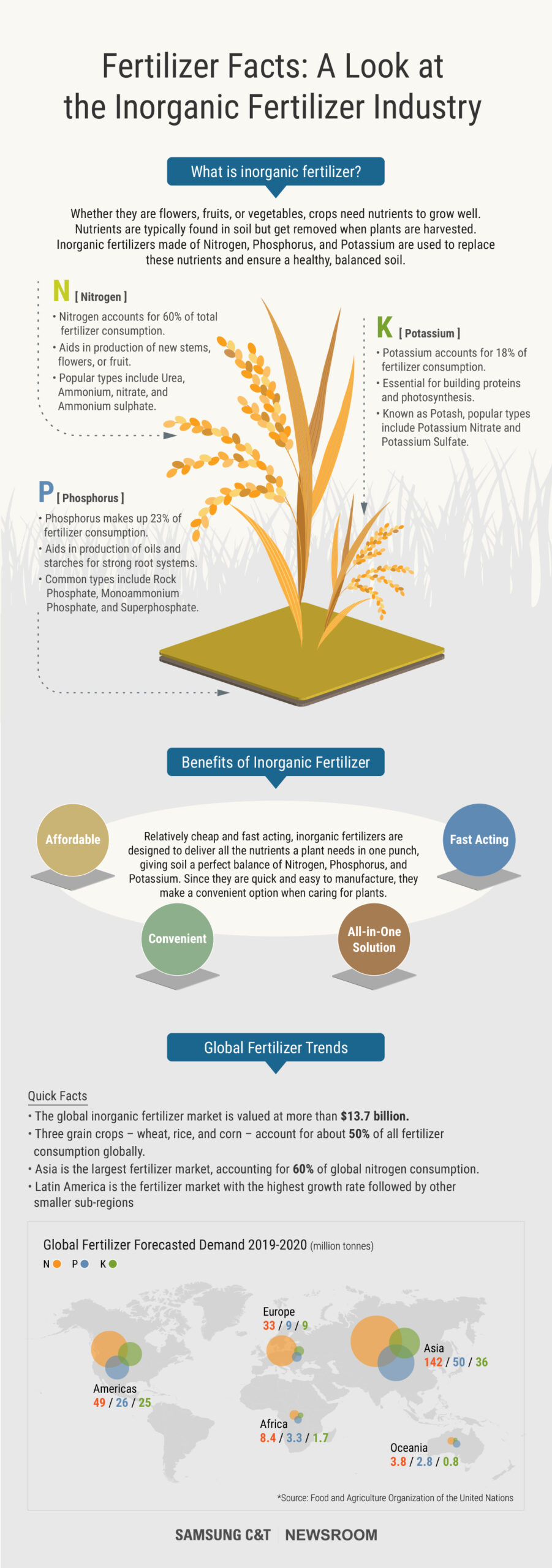Take a stroll through Everland’s gardens this March and you’ll be dazzled by one of the most stunning tulips displays in Korea. Their multicolored bulbs usher in the spring season every year at the country’s most famous theme park, but there’s something unusual about them – they don’t usually blossom until the warmer weather comes in April. So just how do they sprout so early?
Part of is thanks to the science of fertilizers. Whether it’s a garden of tulips, or golden fields of wheat and corn, fertilizers play a vital role in ensuring plants grow large and fruitful and play an integral role in our agricultural industry. In fact, they are so vital to our food system that the fertilizer industry has been growing steadily as demand for food has increased throughout the world, a trend that is predicted to continue.
Currently, the global fertilizer industry is valued at over $13.7 billion and world inorganic fertilizer consumption has reached more than 189 million tons. Population expansion and rising demand for food security in developing regions remain the primary factors driving market growth, along with rising awareness of healthy food. Analysts anticipate that the fertilizer market will grow 2.2% per year through 2024. It is safe to say then, that fertilizers are an inseparable part of our lives and food systems.
Samsung C&T’s Trading and Investment Group started its fertilizer trading business in the 1970s, expanding to overseas markets and concentrating in Southeast Asia throughout the 1990s. Ever since 2010, the firm has been a key player in the fertilizer trading market. At present, the T&I Group is one of the top 10 players in the global fertilizer market, handling 2.5 million tonnes annually.
Take a look at the infographic below to get a better understanding of how inorganic fertilizers work and the future of the market.







